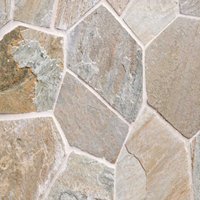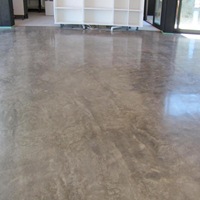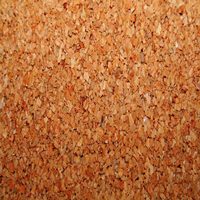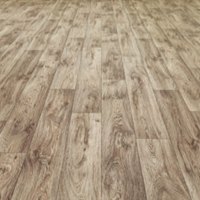You have no items in your shopping cart.
Post Requirement
Types of Flooring
These four types are the basic types in flooring, which has started from the early ages,
- Mud and Muram Flooring
- Natural stone flooring
- Clay or Ceramic tile flooring
- Cement based flooring
Mud and Muram flooring:
These floorings are commonly used in rural India, as they are cheap, fairly impervious and easy to construct. These floorings need a thin wash of cow dung at least once a week, and they are known as good thermal insulators.

Natural Stone flooring:
These floorings are very commonly seen all over India. This type of flooring is durable, resistant to wear, and easily constructed and repaired. The stone slabs may be rough or polished. The rough slabs are used for godowns, sheds, stores, etc...and polished is used in houses, hospitals, schools, and government buildings.
Granite flooring-
It is expensive, and is available in different shades. The material looks very elegant and also durable.
Marble flooring-
Marbles are also used for flooring, and Rajasthan marbles are very famous and widely used in India. Marble floors may be made from large slabs or small-sized slabs and come in many varieties.

Clay or Ceramic Tile flooring:
Commonly used flooring tiles are
Clay Tiles-
These tiles are soft glazed, the coating of glaze being 0.1-0.2 mm thick. They are manufactured by adding ground glass and pottery ware to selected clay, which is moulded and pressed.
Glazed Tiles-
First, ceramic tiles are manufactured to the required size and are provided with glaze and decoration, then fire again in the oven. During glazing, colors may be provided and glossy or matte finishing may be given. Glazing gives a good appearance and protects tiles from the atmospheric condition.
Vitrified Tiles-
The word ' Vitreas' means 'like glass' in hardness, structure, brittleness, and transparency. These tiles are manufactured from terracotta, a hard, unglazed ceramic material. These tiles are very attractive and are used in residential buildings and offices.

Cement Based flooring:
The following types of cement flooring are extensively used:
Cement Concrete flooring-
This type of flooring is inexpensive and durable and commonly used in residential, commercial and industrial buildings. It consists of two courses, one is the base course, and the other is wearing coat. It needs curing for 7-14 days and the red oxide finishing coat is provided for an attractive appearance.
Terrazzo flooring-
Terrazzo finishes coat is provided over concrete flooring to get an attractive appearance and this finish consists of 75-80 percent of surface marble chips embedded in cement mortar.
Mosaic flooring-
Mosaic flooring consists of a finishing coat of small pieces of glazed china or marble arranged in different patterns in cement mortar or lime-surkhi. The base course is concrete flooring in which 30-40 mm thick mortar layer is provided.

These are some miscellaneous floor finishes
Pavement Blocks Flooring:
This flooring is also known as brick paving, which is a decorative method of creating a hard surface. They are used for driveways, town centres, pavements, and many others. The main advantage of using pavement blocks flooring is that during damage individual bricks may be replaced without leaving any visible mark on the surface.
There are two common types of paving bricks- Clay and Concrete. Clay pavers are used in terraces, and in surrounding areas of individual houses in a compound. Concrete blocks with the thickness smaller than 80 mm are used for pedestrian pavements or footpaths. The blocks may be laid in a different attractive pattern and the most common and the strongest pattern is a herringbone pattern.

Tremix Flooring:
Tremix flooring is a special concrete floor, which is hardened by admixtures and dewatering. This type of flooring is mostly used where rigid surfaces are required for machine foundation, lightweight crane, light load carrier vehicles and also in industrial facilities.
Timber Flooring:
Timber flooring is very costly and is used in halls and auditoriums. The timber plates may be placed either directly on the concrete bed or over a timber framework. In this type of flooring, it is necessary to provide proper ventilation below the floor.
IPS Flooring:
IPS stands for Indian Pattern stone or Indian polished stone. This type of flooring consists of a mechanically well-compacted base of brickbat or sand with a 75 mm thick layer of plain cement or lime concrete. This flooring is used when the load on the industrial floor is less.

Rubber Flooring:
In this type of flooring, tiles or sheets of rubber with fillers such as cotton fibers, asbestos fiber or granulated cork are manufactured in a variety of colors and are attractive, noise-proof and also expensive. These sheets or tiles may be fixed to timber or concrete floors.
Cork Flooring:
Cork is the outer bark of the oak tree and is manufactured as a filler material in the form of carpets or tiles, which can be fixed to concrete or wooden floors. Such type of flooring is noise-proof and is mostly used in theatres, libraries and broadcasting stations.

Asphalt Flooring:
Asphalt flooring is dust-free, resistant to insect attack, waterproof and jointless and is used for surfaces in dairies, hospitals, terrace floors, loading platforms and in commercial complexes. This flooring is available in different forms like asphalt tiles, asphalt terrazzo, special acid-proof asphalt, and mastic asphalt.
Linoleum Flooring:
Linoleum sheets can be fixed to concrete or wooden floors, which are durable, cheap and dust-free. These sheets are manufactured by mixing oxidized linseed oil in gum, resins, pigments and filler materials like wood flour and cork dust.

Vani Paspula













